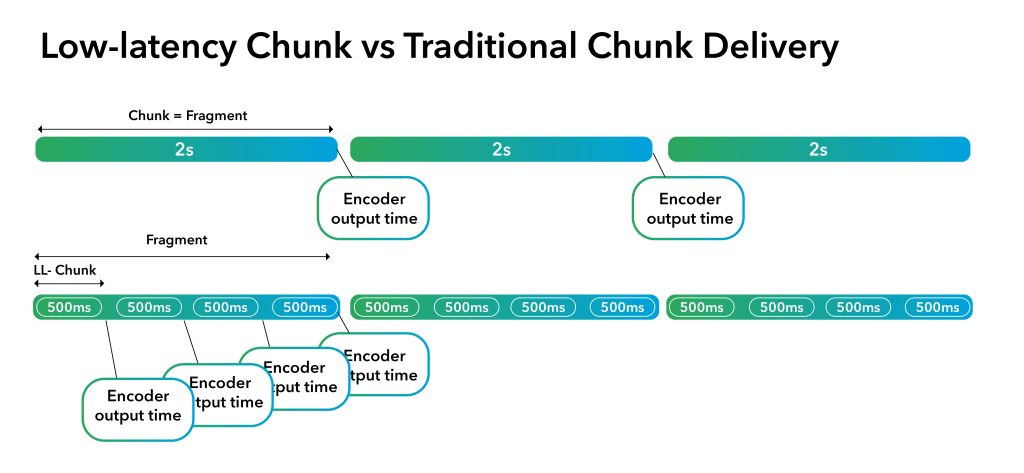In our blog series Meet the Minds Inventing the Future of Video, we’ve been going behind the scenes to find out more about some of Ateme’s brightest minds and what they’ve been working on.
In part six of the series, we introduce Fellow Research Engineer in Advanced Technologies, Eric Toullec. Here, he speaks to us about his role working with Common Media Application Format Low Latency (CMAF-LL).
What is Your Role at Ateme?
I’m a research engineer with Ateme’s Research and Innovation team, also known as the CTO office. I’m currently working mainly on transport and system topics for proofs of concept (POCs) and collaborative projects. I’m also in charge of the innovation team’s demos that we are showcasing during events such as NAB and IBC.
What Specifically Have You Been Working on at Ateme?
Over the last few years at Ateme, I’ve been focusing on ATSC3.0 and low-latency OTT. I’ve helped improve our products to support these new standards by participating in ATSC3.0 plugfests. We’ve been able to enhance interoperability with other components of the distribution chain. I also took part in a study focusing on reducing the latency of OTT protocols. Currently I’m working on several 5G projects aimed at improving viewers’ Quality of Experience (QoE) by using CMAF-LL to reduce latency. When talking about low latency and 5G, there are two major challenges:
- getting as close as possible to the latency of traditional broadcast services
- decreasing the latency to allow service providers to add augmented reality to live content.
What is CMAF Low Latency?
OTT video services have been widely deployed using HTTP Adaptive Streaming standards. Each component of the distribution chain, from video encoders to CDNs, has been improved to ensure a maximum QoE for the viewer. Two major drawbacks of OTT technologies remain: the CDN costs induced by the need to support multiple packaging standards and the end-to-end latency.
To reach all commonly used devices, offering services for both MPEG-DASH (Dynamic Adaptive Streaming over HTTP) and Apple HLS (HTTP live streaming), a service provider must enclose content within two formats, ISOBMFF and MPEG2-TS. However, this increases storage costs and decreases CDN caching efficiency. Supported by Apple and Microsoft, CMAF aims to define a common packaging format, thereby avoiding storing the same content several times. CMAF also provides solutions for both low-latency HLS (LL-HLS) and low-latency DASH (LL-DASH) to significantly reduce the OTT latency which used to be the technology’s bottleneck.
What Industry Challenges Does CMAF Low Latency Address?
The latency of OTT services is higher than that of legacy broadcast services. This is because the granularity of audio and video data transport is a segment that typically carries between two and 10 seconds of content. Each component along the distribution chain must wait for a full segment before making it available for the next component.
CMAF addresses this issue by fragmenting the segments into short chunks. It also uses HTTP Chunk Transfer Encoding to send them through production. This way, the end-to-end latency no longer depends on the segment duration for low-latency players. However, the streams are backward-compatible with legacy players.

In order to create these short chunks, but limit the number of requests sent to the CDN, byte-range addressing was designed. Instead of having the CDN request multiple (e.g., 12 x 500ms) chunks per segment, one request is issued for all the chunks at the beginning of the segment. That way they’re available for the CDN to send when ready. This limits the number of http requests, frees up bandwidth, and makes player and the CDN interaction considerably more efficient.
The introduction of CMAF-based packaging, chunked encoding, and range-based delivery for LL-HLS benefits performance and efficiency for distributors of cross-format, low-latency livestreams including:
- Increased cache efficiency at origin and CDN distribution tiers, which boosts performance and lowers operating costs.
- Decreased request rates from clients. We demonstrated reductions of 30% to 40% for typical encoding configurations. This allows increased CDN-supported scale, lowers operating costs, and reduces the frequency of request errors.
What Have You Achieved in this Field at Ateme?
The market was dominated by two protocols, MPEG-DASH and HTTP live streaming. Content providers needed to package the same content twice to ensure they covered most of the users. With various partners, we studied how the player-agnostic container format, CMAF, could help reduce the number of stored segments for OTT support. This, in turn, improved versatility and interoperability with modern technologies, and decreased end-to-end latency.
During this project, I developed and validated one of the first origin servers ensuring interoperability. This came about among four types of clients: low-latency HLS, standard-latency HLS, low-latency DASH, and standard-latency DASH. Apart from demos, this origin server is also used for testing and validation purposes and can help improve our products. The results of this collaboration have been discussed in multiple works: Universal CMAF Container for Efficient Cross-Format Low-Latency Delivery.

